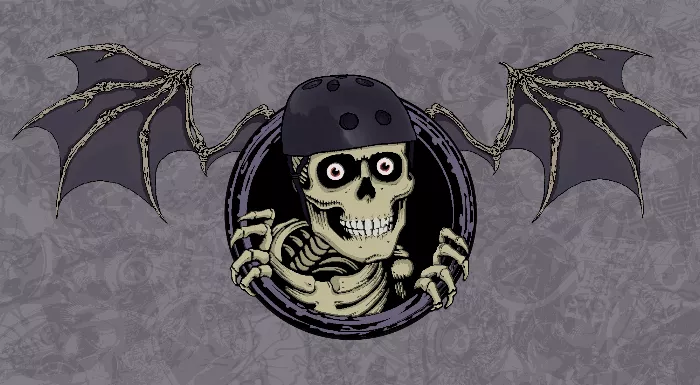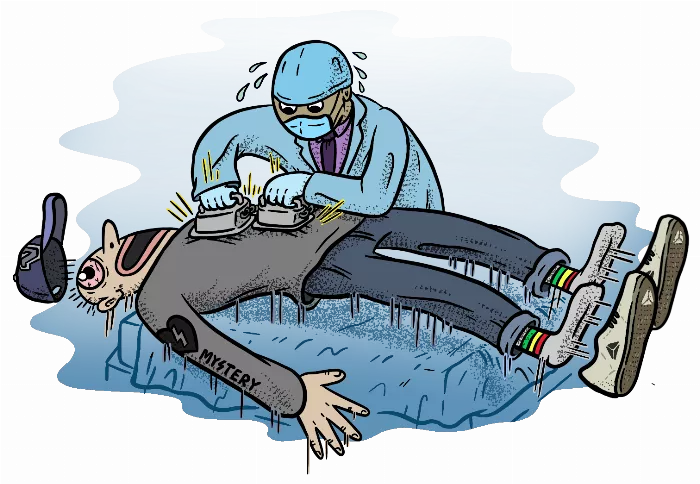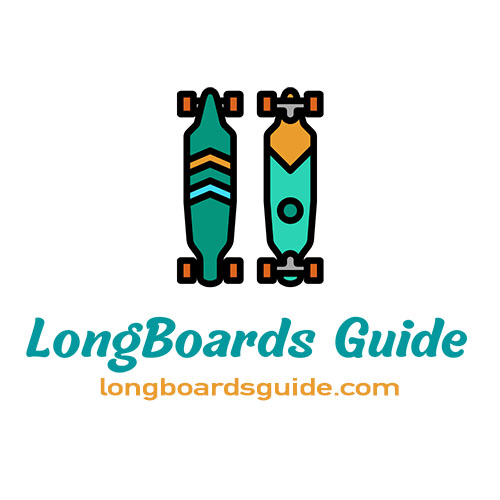You need a lot of practice to learn how to turn on a longboard without trouble. It requires your balance, ability, determination, and undivided attention.
Do you want to learn how to ride a longboard? Keep reading to learn more!
How To Turn On A Longboard?
Follow the steps below to practice turning right now.
Getting Ready to Turn
Ensure that your vehicles are well-fitting. First, stand on a deck and transfer your weight clockwise and counterclockwise.
The larger the trucks, the more probable your deck will become unstable and difficult to manage. You’ll need to adjust the tension of the kingpin nut if you wish to change your trucks.
Last but not least, using a flat and empty location for practice is a fantastic idea.
Kick-Turning
Balance yourself on the back wheels while raising the longboard’s tip when performing kick-turns. This action redistributes weight and steers your board for a brief period.
Skaters that employ this turning technique may change their board’s direction without speeding up. To accomplish your kick turn, you go through seven steps.
- Begin in your standard riding stance.
- Continue to push until you’ve built up a decent quantity of momentum.
- Shifting your back foot towards the deck’s edge is the most excellent method to go into a leap.
Place your foot higher than the front truck of the deck. You keep applying pressure to the platform’s center until you’re ready to rotate fully.
- Gradually increase the power on your rear foot. Your bow will swell to propel you into the air while maintaining balance on your rear wheel.
- To avoid scratching or falling backward on the longboard’s tail, maintain your center of gravity above the middle of the board.
- Move with the deck’s tip in the desired direction. Using your body weight, swing your board’s nose clockwise or counterclockwise. Use your front foot, shoulders, and hips to turn the board.
- Get back on your forefoot. You’ll be able to finish your spin once your front wheels are back on the ground.
Making a 180-Degree Turn
- Put your front foot on the board’s tip and the back at the center. Allow your frame to pivot.
- Shift most of your weight to the front. Then, raise your rear wheel higher than the ground to make minor modifications to your weight distribution.
- Foot movement in sync with your board. The exercise progresses until completing the switch.
Sitting Technique
If you solely turn on your board by your feet, you can be jerking and hopping wildly. You won’t be able to make tight turns, causing you to bang into a fence or other unpleasant object.
The sitting technique to turn will help. Yet, It’s the only way to do it with heels.
It may result in the fastest long turn you’ve ever done.
- To begin, by leaning towards the heel, you may turn your board.
- Sit down while doing so, and place your legs perpendicular. At the same time, keep yourself balanced by using your arms.
- Put a lot of weight on your forefoot.
You will have better steadiness as a result of this.
The Best Longboard For Your Turning
A longboard ranging from 38″ to 50″ is the finest choice. After you’ve mastered turns on these, go on to longer boards.
Seek the boards that have been “cambered” or slightly bent in the middle. They are ideal for taking challenging and rapid turns.
Besides, increase your board’s control by adding wheels with an 80A rate. Soft wheels will increase road traction, making maneuvering in tight places more straightforward.
Key Factors Affect Your Turning.
On a longboard, your ability to turn rapidly depends on your speed and capacity.
Speed
Low:
At low speed, you can kick a turn like a skateboard. You should be able to carve into a turn and tighten it up to around 90 degrees with the appropriate setup.
The more you ride and practice, the better you will become at both.
Medium:
Turning transitions into carving can slow down before carving a corner or kick turning it at medium speed.
High:
Sliding and following racing lines are your most excellent alternatives for taking bends fast at more incredible speeds. They typically involve the freeride and downhill region of longboarding.
Ability
Your present ability on your board is the most crucial element in how quickly you can make a move. You must practice if you want to improve and be able to kick, turn at faster speeds or nail that precise carve.
Now, watch the following video and get ready to practice:
Why is My Longboard Not Turning?
Follow the following tutorial to deal with your longboard not turning. These tips will work best for longboards, not a shorter cruiser or street deck.
Loosen The Kingpin Nut
The oversized bolt that links the hanger to the baseplate is the kingpin. Turning and cutting might be difficult if the kingpin is excessively tight.
You may use an adjustable wrench or a skate tool to loosen this. Approach this remedy with care, as a kingpin nut that is too loose might be hazardous.
When tightening the kingpin nut, make sure it applies a tiny amount of pressure to the washer below it and does not feel too loose.
Use Softer Bushings
If your board is still not carving as well as you’d like, purchasing softer bushings may make a significant impact.
Replacing the bushings is one of the first things I do since I like the surfy feel and deep carve that softer bushings provide.
Hardness is indicated by a number in the range of 78a to 98a. The lower the number, the softer the bushing.
Replace Trucks
It would be the next choice if options 1 and 2 didn’t satisfy you. While reverse kingpin trucks come with most longboards, conventional kingpin trucks are also available.
Reverse kingpin trucks, which cut deeper than regular trucks, may be worth upgrading.
Conclusion
Longboard turning is possibly the most enigmatic aspect of the sport. Even after years of longboarding, many skateboarders still have no idea how to turn a longboard around a curve.
You may find it tough because you are a beginner. Yet, the faster you master using your body weight to pivot to the side you choose, the simpler it will be to ride in the direction you want.
I hope that this guide should fix the majority of situations.
Thank you for reading!






